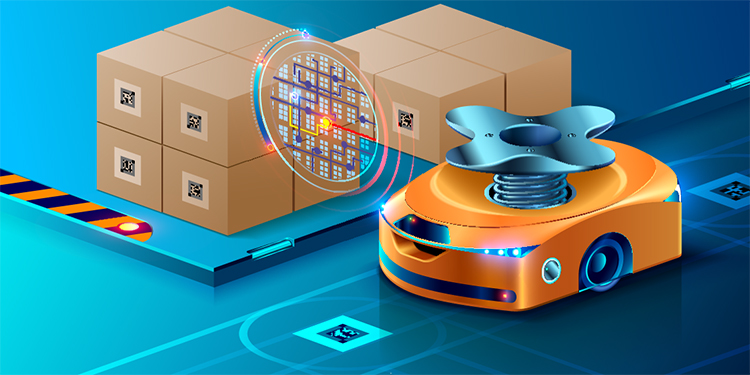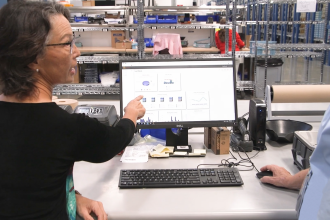
Computer-controlled and battery-powered, automatic guided vehicle (AGV) systems navigate inside a manufacturing facility or warehouse or outside on paved surfaces to automate materials movement. More importantly, they do this safely, with only six AGV-related fatalities documented by the Occupational Health and Safety Administration (OSHA) over the past three decades, with the last one occurring in the early 1990s and the majority caused by improper use of the equipment. Their implementation also yields significant reductions in damage to products, building structures and other equipment when compared to forklifts which, as manually operated vehicles, are prone to such accidents due to human error.
AGVs are equipped with a variety of sensors that trigger them to slow or stop when they encounter something in their path, such as a person, a building column or a palletload. These redundant systems—including optical (or contactless) obstacle detection systems, emergency stop buttons, pressure sensitive (or mechanical) bumpers, and software that monitors speed, inclines, declines and curves—enable failure detection and correction before the AGV malfunctions. In addition to those safety features, AGVs deliver another five safety benefits to manufacturing and warehousing operations, including:
- AGVs automate repetitive tasks that can cause personnel to become fatigued and therefore more likely to make a mistake that could increase safety risks and product damage.
- AGVs transport and lift heavy loads to high or low heights—activities that increase the risk of ergonomic strains and injuries due to improper lifting, stretching, reaching, pushing, pulling, or repeatedly handling a load.
- Because they are driverless, AGVs are ideal for implementations that require them to pass through hazardous or extreme conditions. These could include handling of corrosive or dangerous materials, or transporting products inside freezer systems, both of which pose heightened personnel risks.
- AGVs travel along predictable paths, passing through and stopping at the same areas over and over at a consistent, controlled rate of speed. That repetitiveness increases personnel’s ability to anticipate each vehicle’s actions, unlike manual vehicles that can be driven erratically.
- Because AGV travel is pre-programmed, the vehicles will not miscalculate a corner during a turn like a forklift operator might. This eliminates the risk of an impact of vehicle or load against a stationary structure—such as storage rack or a building column—preventing damage or collapse.
Looking for more information on how AGVs can enhance safety in your operation? MHI’s AGVS Industry Group was recently featured in an MHI Solutions magazine article on this topic.



